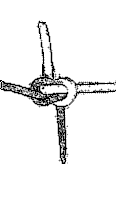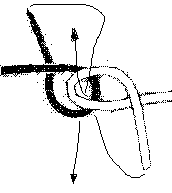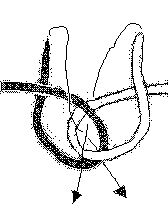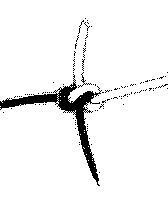| Discovery or invention of a new knot is considered to be the ultimate challenge by many knot tyers. However, considering how long humans have been tying knots in things, it seems unlikely that much new is possible. What can happen is that modern knowledge expands, rediscovers and documents something that has been seen before. The following are two "20th century" bends that are excellent in their own right...... whether they are really new or not. Both of these bends begin in bdpq form starting positions. | ||
| Eastern Zeppelin - The Eastern Zeppelin is a variation of the Zeppelin or Rosendahl Bend. Charles Rosendahl, being a captain of a zeppelin, insisted that his airship be moored using this bend. The distinct feature of this bend is that it is exceptionally easy to break and tightens consistently to hold when pulled (even if somewhat loosened). | ||
| ||
 Figure 2 - Tied and drawn tight Figure 2 - Tied and drawn tight | ||
| Rigger's Bend - One of the few new knots "discovered" in this century. This knot was originally credited to Dr. Edward Hunter in 1970 and called the Hunters Bend. Actually it was published as a Rigger's Bend in Knots for Mountaineers by Phil Smith about 1950. This is an excellent method for joining two ropes. The illustrated method is clearer to understand for most. It is quite effective on synthetics. This method of tying is from The Alternative Knot Book. | ||
| ||
| ||
| |


